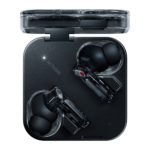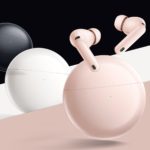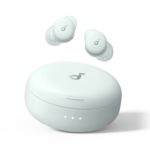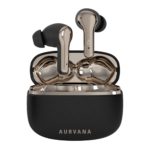The new Apple AirPods Pro 3 improve ANC, comfort, and bass while adding a heart rate sensor and USB-C charging. Our full review reveals why they remain the best true wireless in-ears for iPhone users.
What are in-ears?
In-ear earphones are placed directly in the ear canal. This means that very little power is needed and the built-in diaphragms only need to be moved slightly to achieve acceptable volume levels. Sometimes in-ears are used with ear buds (the most famous example being Apple’s white AirPods). In this case, the earbuds tend to “hook” into the ear, which some people find more comfortable.
What are the benefits of in-ear headphones?
The advantage of in-ear earphones is their size: they are small and lightweight. Their design means that they are usually easy to grip – ideal for sports activities. They are also easy to store. When you’re not using them, they fit easily into a jacket pocket. Thanks to their design, in-ear earphones fit directly into the ear canal or, in the case of ear buds, directly in front of the ear canal. This means that very little power is needed and the built-in diaphragms only need to be moved slightly to achieve acceptable volume levels.
The disadvantages of in-ear headphones compared to on-ear or over-ear headphones
In-ears place the sound source very close to the eardrum, which sounds very direct and close, but also carries the risk of hearing damage and too much isolation from outside noise. This can be life-threatening, especially in traffic. Inexpensive in-ear headphones, in particular, do not offer the depth and spaciousness of over-ear headphones. Also, active noise cancellation is usually not as effective as ANC in on-ear or over-ear headphones.
What is the difference between over-ear and on-ear?
Over-ear headphones are circumaural and have larger diaphragms. On-ear headphones have cushions that sit on top of your ears.
The advantages of over-ear or on-ear headphones
Over-ear headphones, or circumaural headphones, and their smaller brothers, on-ear headphones, have larger drivers or membranes. As a result, the tonal range – especially in terms of naturalness – is greater. These designs mean that the air in front of the ears and the earcups have a greater influence on the sound image. As a result, the sound is more spatially differentiated, and classical or jazz recordings, in particular, create a wide stage in the head on which we can precisely locate the individual instruments. It can be said that listening with large headphones is closer to our natural hearing. Another advantage is that passive noise cancellation is better with over-ears.
What are the disadvantages of over-ears and on-ears?
For some, the size and weight may be a disadvantage, but pressure is also a factor not to be underestimated: if the headphones are too tight, there is an uncomfortable feeling of pressure that can be painful. Heat build-up can also be a problem during long listening sessions. Especially in the warmer months of the year, wearing over-ears or on-ears can become a sweaty affair and spoil your enjoyment of the music.
However, it cannot be said that one design is superior to the other in terms of sound. Both in-ears and over-ears offer excellent sound quality.
Read More:
One response to “What are the pros and cons of in-ear and over-ear headphones?”
Similar Reviews
The Nothing Ear (3) combine a unique Super Mic in the case with adaptive ANC, LDAC and a bold sound signature. Stylish, weatherproof and feature-rich – but with room for improvement in transparency mode.
For under €100, the Huawei FreeBuds 7i deliver a well-equipped package that convinces both technically and sonically.
The Soundcore Sleep A30 are compact, side-sleeper-friendly earbuds with ANC, snore-masking sounds and local playback for uninterrupted nights.
The Creative Aurvana Ace SXFI is the first product to offer Super X-Fi streaming, combining hybrid drivers with powerful sound to provide an impressive all-round package. Weaknesses: ANC and lack of hi-res codecs.
















You have provided an excellent comparative review of both of them. It will make decision-making much easier. Thank you for your information.